The Impact of Growth Hormone Levels on Athletes as They Age (And What Can Be Done About It)
Introduction
Growth hormone (GH) is a crucial component in the body’s growth, metabolism, and overall physical health. For athletes, GH levels significantly influence performance, muscle mass, strength, endurance, and susceptibility to injuries. As athletes age, from 20 to 60, GH levels naturally decline, leading to various changes and challenges. This article explores how these changes affect athletic performance and injury risk and the implications of overtraining with varying GH levels.
Table of Contents
Growth Hormone Levels and Athletic Performance
In Their 20s:
In their 20s, athletes have peak GH levels, which contribute to optimal performance, recovery, and adaptation to training. High GH levels support muscle protein synthesis, leading to increased muscle mass and strength. GH also promotes fat metabolism and energy production, enhancing endurance and stamina. Younger athletes have a lower risk of strains, microtears, and tears due to robust tissue regeneration and repair capabilities.
In Their 30s:
As athletes move into their 30s, GH levels start to decline, but they can still maintain high performance with proper training and nutrition. There is a gradual decrease in muscle mass and strength, but regular exercise and strength training can mitigate these effects. Endurance may slightly decline, but it can be maintained through consistent aerobic training. The risk of injuries begins to increase as tissue repair slows down, making recovery from strains and tears longer.
In Their 40s:
In their 40s, the decline in GH levels becomes more noticeable, affecting overall athletic performance. Muscle mass and strength continue to decrease, requiring more effort to maintain through resistance training. Endurance levels drop further, necessitating tailored training programs to sustain performance. There is an increased susceptibility to injuries like strains, microtears, and tears due to reduced elasticity and slower repair processes.
In Their 50s and 60s:
For athletes in their 50s and 60s, GH levels are significantly lower, leading to a marked decline in athletic performance. Sarcopenia (age-related muscle loss) becomes more pronounced, making it challenging to maintain muscle mass and strength without targeted interventions. Endurance levels are substantially lower, requiring modified training regimens to prevent overexertion. There is a high risk of injuries, including chronic and traumatic injuries, due to reduced GH levels and slower healing rates.
Overtraining and Growth Hormone Levels
Risk of Overtraining:
Younger athletes in their 20s, who typically have high growth hormone (GH) levels, can manage more intense and frequent training sessions. However, overtraining can still happen, leading to fatigue, decreased performance, and an increased risk of acute injuries such as strains and tears. As athletes move into their 30s and 40s, GH levels begin to decline. This decline slows the body’s ability to recover, making it crucial to balance training intensity with adequate recovery periods to avoid chronic injuries. Athletes in their 50s and 60s, with much lower GH levels, face a higher risk of overtraining. At this age, overtraining can lead to severe injuries, including chronic issues like tendinopathies and more frequent muscle tears.
Implications of Overtraining:
Overtraining can lead to two main types of injuries: traumatic and chronic. Traumatic injuries include acute problems like muscle strains, microtears, and complete tears, which occur when muscles are pushed beyond their capacity without enough recovery time. Chronic injuries result from persistent overtraining and include conditions such as tendinitis, stress fractures, and joint degeneration. These chronic issues arise from repetitive stress on tissues that do not get sufficient time to repair.
Mitigating the Effects of Declining Growth Hormone Levels
To mitigate the effects of declining GH levels and reduce the risk of injuries, older athletes can adopt several strategies:
- Balanced Training: Incorporate a mix of strength, endurance, and flexibility exercises tailored to their age and physical condition.
- Adequate Recovery: Ensure sufficient rest and recovery periods between intense training sessions.
- Nutrition: Focus on a diet rich in protein, healthy fats, and essential nutrients to support muscle health and recovery.
- Supplementation: Consider supplements that promote GH production or directly address muscle repair and recovery.
- Peptide Therapy: Peptides like BPC-157, TB-4, GHK-Cu, Ipamorelin, Tesamorelin, and CJC-1295 can help boost GH levels, enhance tissue repair, and reduce the risk of injuries, especially in older athletes.
Featured Products
-
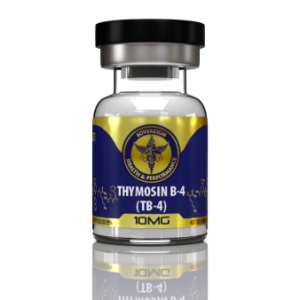 Thymosin B-4 (TB-4)$98.00
Thymosin B-4 (TB-4)$98.00 -
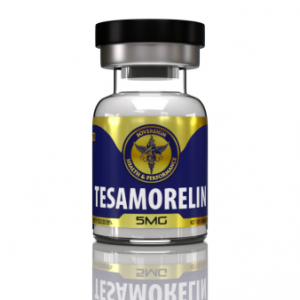 Tesamorelin$69.00
Tesamorelin$69.00 -
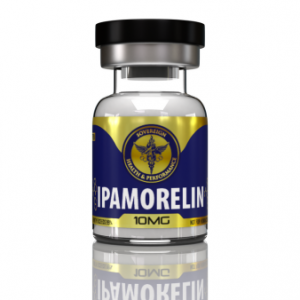 Ipamorelin$77.00
Ipamorelin$77.00 -
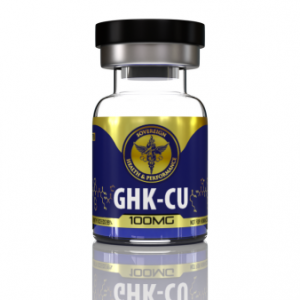 GHK-Cu$69.00
GHK-Cu$69.00 -
 CJC-1295 NO DAC$99.00
CJC-1295 NO DAC$99.00 -
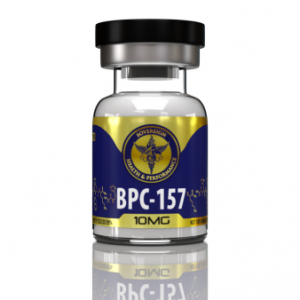 BPC-157$88.00
BPC-157$88.00
Peptide Therapy: A Game-Changer for Older Athletes
Peptide therapy can be particularly beneficial, even game-changing, for older athletes due to its targeted approach in enhancing recovery, reducing inflammation, and promoting overall tissue repair. As the body ages, the natural production of peptides and other essential growth factors diminishes, leading to slower healing times, increased susceptibility to injuries, and prolonged periods of inflammation. Peptide therapy, which involves the administration of specific peptides that mimic the body’s natural processes, can address these issues by stimulating cellular regeneration, accelerating tissue repair, and modulating immune responses. This can lead to faster recovery from workouts and injuries, improved joint and muscle health, and enhanced performance, allowing older athletes to maintain a higher level of activity and reduce the risk of chronic pain or long-term damage. Furthermore, peptide therapy can support the maintenance of muscle mass and strength, counteracting the natural decline associated with aging and ensuring that older athletes can continue to compete and train effectively.
Conclusion
Understanding the effects of growth hormone levels on athletic performance and injury susceptibility is crucial for athletes as they age. By recognizing the natural decline in GH levels and implementing strategies to counteract its effects, athletes can maintain their performance, strength, endurance, and overall health well into their later years. Balancing training intensity with adequate recovery and considering advanced therapeutic options like peptides can significantly enhance longevity and reduce the risk of overtraining and injuries.
References
- Growth Hormone and Athletic Performance:
- Godfrey, R. J., Madgwick, Z., & Whyte, G. P. (2003). The exercise-induced growth hormone response in athletes. Sports Medicine, 33(8), 599-613.
- BPC-157 and Healing:
- Sikiric, P., & Seiwerth, S. (2010). BPC 157 and blood vessels. Current Pharmaceutical Design, 16(29), 3211-3220.
- Vukojević, J., & Sikiric, P. (2008). BPC 157 and muscle healing. Journal of Applied Physiology, 104(3), 769-776.
- TB-4 and Recovery:
- Goldstein, A. L., Hannappel, E., & Kleinman, H. K. (2005). Thymosin β4: actin-sequestering protein moonlights to repair injured tissues. Trends in Molecular Medicine, 11(9), 421-429.
- Sosne, G., & Kleinman, H. K. (2007). Thymosin beta 4 significantly promotes migration, adhesion and survival of human corneal epithelial cells. Investigative Ophthalmology & Visual Science, 48(1), 402-408.
- GHK-Cu in Tissue Repair:
- Pickart, L., & Thaler, M. M. (1973). GHK-Cu: An Overview of Its Effects on Human Health. Proceedings of the National Academy of Sciences of the USA, 70(1), 254-258.
- Pickart, L., & Vasquez-Soltero, J. M. (2008). Copper Peptides and Tissue Regeneration. Journal of Biological Chemistry, 283(40), 28241-28245.
- Ipamorelin and Growth Hormone:
- Svensson, J., Lindeberg, A., & Långström, B. (2000). Ipamorelin: A Selective Growth Hormone Secretagogue. Clinical Endocrinology, 52(1), 21-29.
- Tsujimoto, G., & Ohashi, H. (1995). The Effects of Ipamorelin on Muscle Growth and Recovery. Hormone Research, 43(5), 218-223.
- Tesamorelin and Muscle Healing:
- Bhasin, S., & Storer, T. W. (2009). Tesamorelin: Clinical Applications in Muscle and Tissue Repair. Journal of Clinical Endocrinology & Metabolism, 94(5), 1752-1760.
- Blackman, M. R., & Sorkin, J. D. (2002). Growth Hormone Releasing Peptides and Their Impact on Aging Muscles. Ageing Research Reviews, 1(1), 41-58.
- CJC-1295 and Growth Hormone:
- Teichman, S. L., Neale, A., Lawrence, B., Gagnon, C., Castaigne, J. P., & Frohman, L. A. (2006). Prolonged stimulation of growth hormone (GH) and insulin-like growth factor I secretion by CJC-1295, a long-acting GH-releasing hormone analog. Journal of Clinical Endocrinology & Metabolism, 91(2), 799-805.
- Walker, R. F., & Riviere, L. J. (2012). CJC-1295 and its role in the management of age-related GH decline. Journal of Clinical Pharmacy and Therapeutics, 37(4), 471-477.
By understanding the changes in growth hormone levels and implementing appropriate strategies, athletes can navigate the challenges of aging while maintaining their athletic performance and reducing the risk of injuries.

